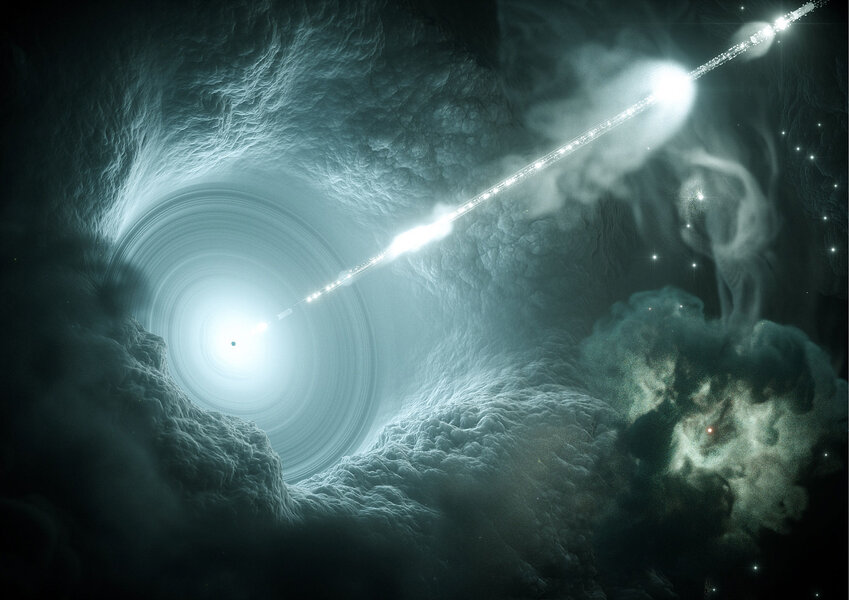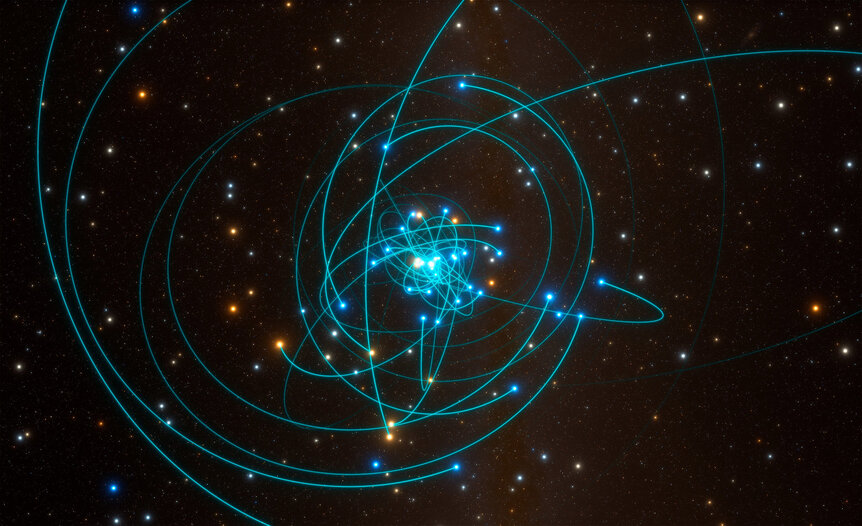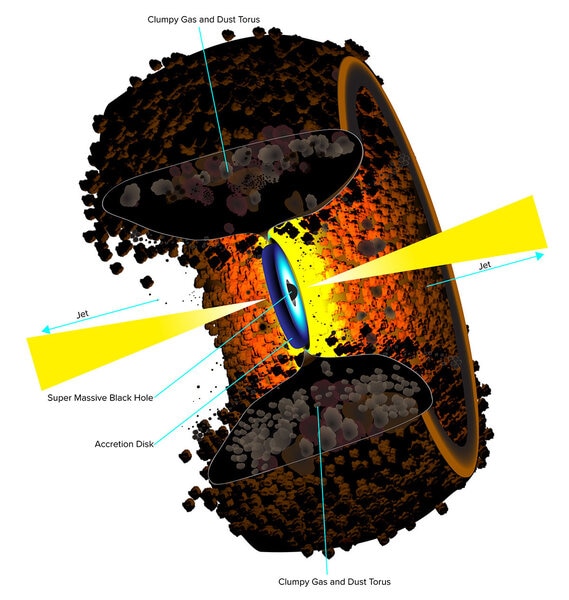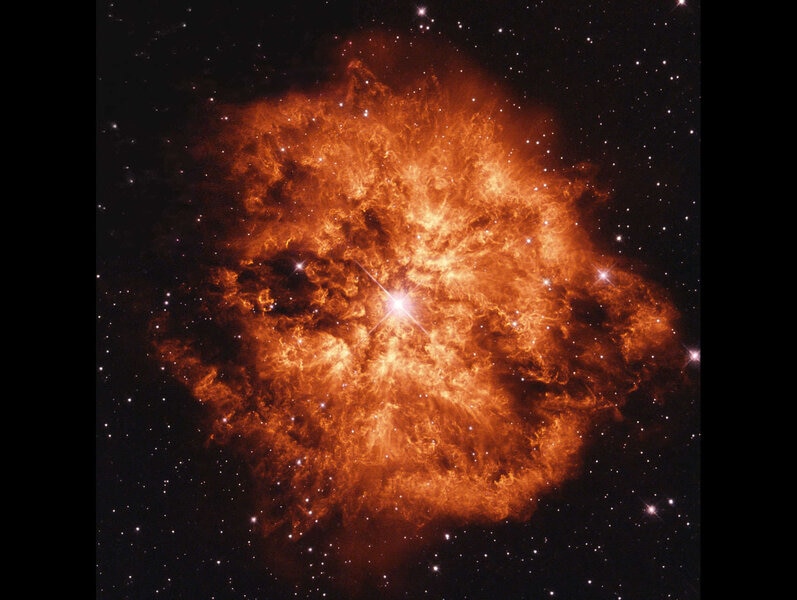Create a free profile to get unlimited access to exclusive videos, sweepstakes, and more!
Supermassive stars might be born in the chaos around supermassive black holes
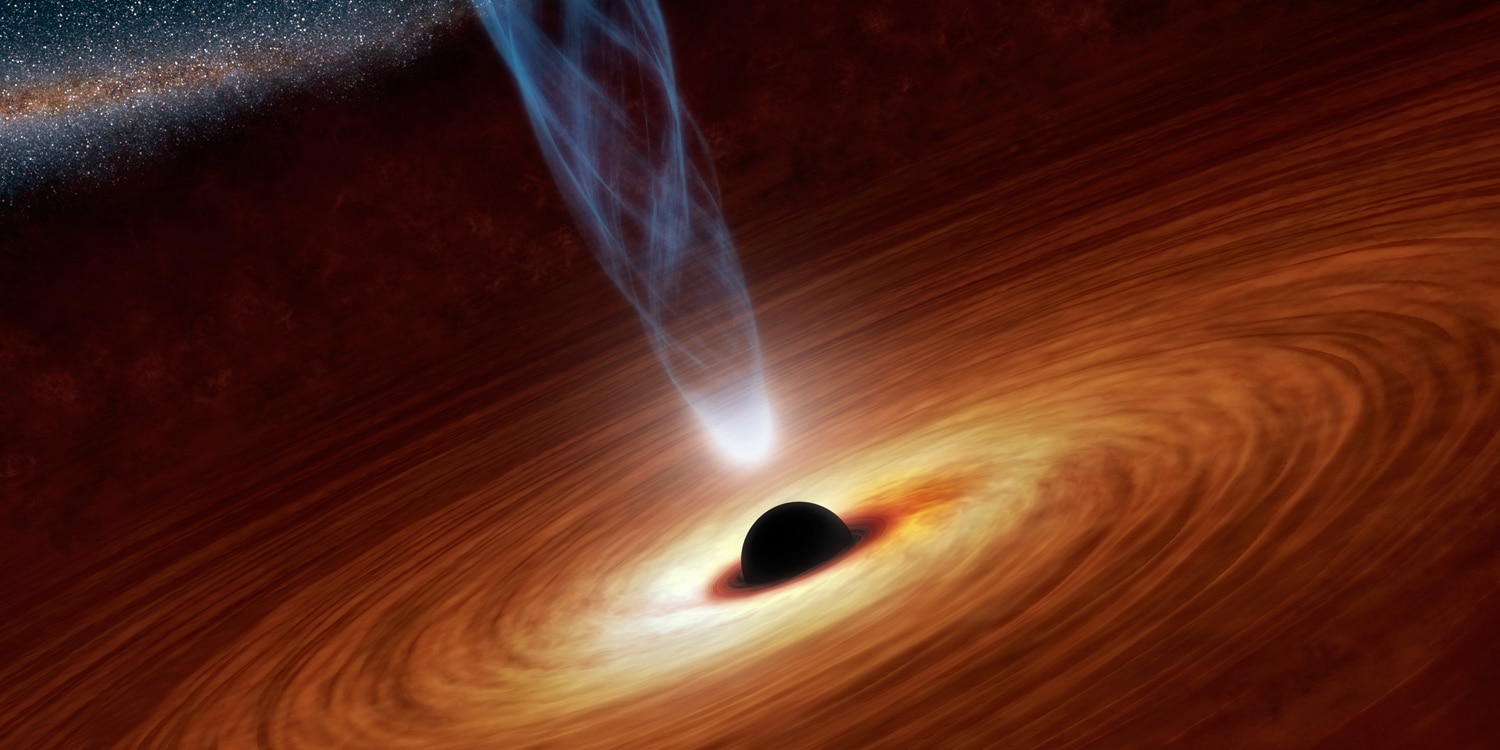
If you asked me where the most massive stars in the Universe might exist, the last place I'd guess would be in hellish accretion disks around supermassive black holes.
Yet a new paper looking at how stars would behave near these black holes shows exactly this. According to this theoretical work they can either form there and grow huge, or form nearby and be captured, whereupon then they'd grow huge.
I can't remember the last time I read a journal paper and muttered “holy crap” under my breath so many times.
Stars usually form in vast clouds of gas and dust. Parts of the cloud collapse under their own gravity, and these knots then condense to form stars. Massive stars burn through their nuclear fuel rapidly and explode as supernovae, but stars like the Sun live much longer. The gas cloud either dissipates or that kind of star leaves it over time, going on to live a stable life for billions of years in the cold vacuum of space.
But what if their environment is not a cold vacuum? What if instead it's a matter-strewn violently chaotic inferno just on this side of the infinite fall into a black hole?
Slight tangent: Big galaxies have supermassive black holes in their centers, with millions and even billions of times the mass of the Sun. As gas and other matter fall toward the center, the material doesn't fall straight in — it swirls around the black hole in a flat disk called the accretion disk. Friction makes the disk incredibly hot, and it can glow so fiercely it can literally outshine the combined total of all the tens or hundreds of billions of stars in the galaxy.
So yeah, these accretion disks are pretty extreme environments.
Our own galaxy has a supermassive black hole called Sgr A* (“Sagittarius A star”), and while it's quiet now it wasn't always so. It was certainly active when the galaxy was young many billions of years ago, and there's ample evidence it was active much more recently, too.
But the volume around Sgr A* is weird. Looking very close to the black hole, there are hundreds of massive stars orbiting it just a few light years out, far more than you'd expect given the usual fraction of stars that are this hefty. It's as if something there has actually increased the masses of normally lighter-weight stars. Also, these stars shouldn't live very long, so it's also as if something has rejuvenated them, adding millions of years to their lives.
Astronomers have speculated that perhaps these stars interacted with an accretion disk around Sgr A*, back when it had one. Maybe that somehow made these stars what they are now...?
The new work is the first to look into this in depth. The astronomers used the known physics of how stars form and evolve, but instead of having them do this in deep space, they looked at how the equations change if the stars are instead embedded in a supermassive black hole's accretion disk.
And yeah, this changes things. A whole lot.
For one thing, these disks are much denser than gas clouds, so this gives a star a lot more material to grow. They draw the accretion disk gas in via their own gravity and can get quite large quite rapidly. The astronomers found a star can start off relatively small but grow to nearly 200 times the mass of the Sun in just 70 million years! That's incredible.
Very few stars attain this kind of bulk. The problem is they get too hot: The rate at which they generate energy via nuclear fusion grows ridiculously fast with mass. By the time you get to 100 or 200 times the mass of the Sun, the star is blasting away energy so frantically that it's hard for material to fall onto it. A gas atom falling toward the star via gravity feels an outward force due to the intense radiation hitting it. If these two balance, the star stops growing (this is called the Eddington Limit).
Also, that increased fusion rate seriously shortens the star's life. When it runs out of hydrogen in its core it starts to fuse helium. This runs out relatively rapidly, and then it fuses carbon, then oxygen, then silicon… then boom. The star explodes. Supernova. Bye bye. This happens so rapidly the star doesn't have time to grow huge.
But in an accretion disk these stars can get around this limit. The astronomers find that as a star grows by adding hydrogen from the accretion disk, this material can get mixed inside the star, finding its way down to the core. This can add a lot of time to the stars' clock, like a fighter jet refueling in midair, allowing them more time to grow.
They also found that when the stars grow huge they also blow a fierce wind, sending material back out into the disk. This stuff from inside the star will contain heavier elements due to the fusion going on in the core. That's very interesting, because some actual disks in other galaxies are seen to have more heavy elements in them than you'd expect.
At this point one of two things can happen. 1) The star explodes, sending out even more heavy elements into the disk, while its core collapses to form a black hole, or b) the influx of matter creating the accretion disk chokes off for some reason, the disk falls into the black hole, and what's left are a bunch of rejuvenated stars orbiting a quiet supermassive black hole.
The latter is just what we see with Sgr A*. Hmmm.
In the former case though you might expect to see dozens if not hundreds of smaller black holes orbiting the supermassive one. These black holes might merge as they're forced together in the confined space around the galactic center. When they do they blast out gravitational waves that can be detected from Earth… and something like that was possibly seen in 2019. It's not proof, but it's interesting.
To be clear this work is still theoretical, and there's no direct evidence for it yet. Even one of these supermassive über-luminous stars would be difficult to spot against the eye-searing background light of an accretion disk. But the stars around our own local supermassive black hole Sgr A* indirectly support this idea.
Also, it's a first stab at this idea, though it looks very well thought-out and thorough. Still, there's a lot more that can be done here to refine the idea and look at details in the models. I think it's a fascinating idea, and the fact that stars like this may even be possible makes me happy. The Universe never ceases to surprise me, and ironically therefore it wouldn't surprise me if this idea turns out to be correct.
